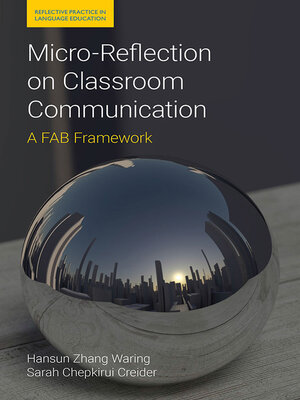Micro-Reflection on Classroom Communication
ebook ∣ A FAB Framework · Reflective Practice in Language Education
By Hansun Zhang Waring

Sign up to save your library
With an OverDrive account, you can save your favorite libraries for at-a-glance information about availability. Find out more about OverDrive accounts.
Find this title in Libby, the library reading app by OverDrive.



Search for a digital library with this title
Title found at these libraries:
| Library Name | Distance |
|---|---|
| Loading... |
Traditional concerns with classroom communication have centered on questions such as who talks more, whether the interaction is teacher-centered or student-centered, whether participation is restricted to a few or available to all, what kinds of questions teachers ask, and what kinds of feedback they give. These indicators provide a simple and useful way of capturing classroom communication in distributional and categorical terms. Less attention has been devoted to observing and understanding the quality of this communication — whether it facilitates learning regardless of, for example, who talks more.
Based on over a decade of fine-grained analysis of video-recorded ESL classroom interaction, this book offers one way of seeing and gauging the quality of classroom communication beyond distributions and categories. In particular, by parsing detailed transcripts of actual classroom interaction, it invites reflective conversations on how three principles of skillful classroom communication may be practiced in the micro-moments of classroom interaction: fostering an inviting environment, attending to student voices, and balancing competing demands (FAB). The goal is to cultivate a mentality of micro-reflection—one that sensitizes teachers to the consequentiality of every move they make as they make them in the simultaneity and sequentiality of second-by-second classroom interaction.







